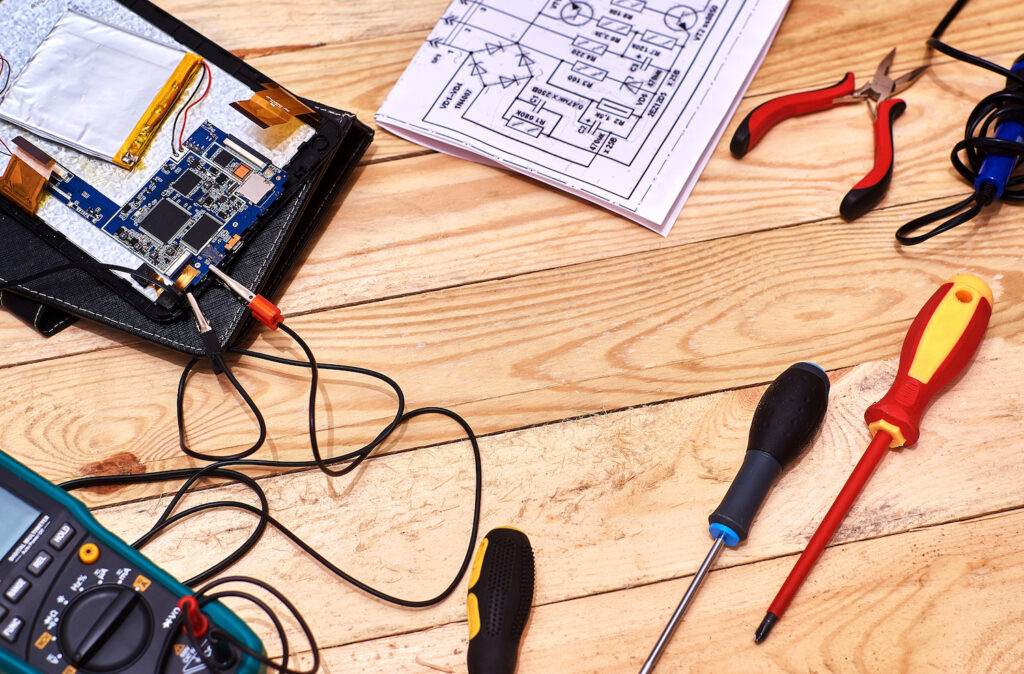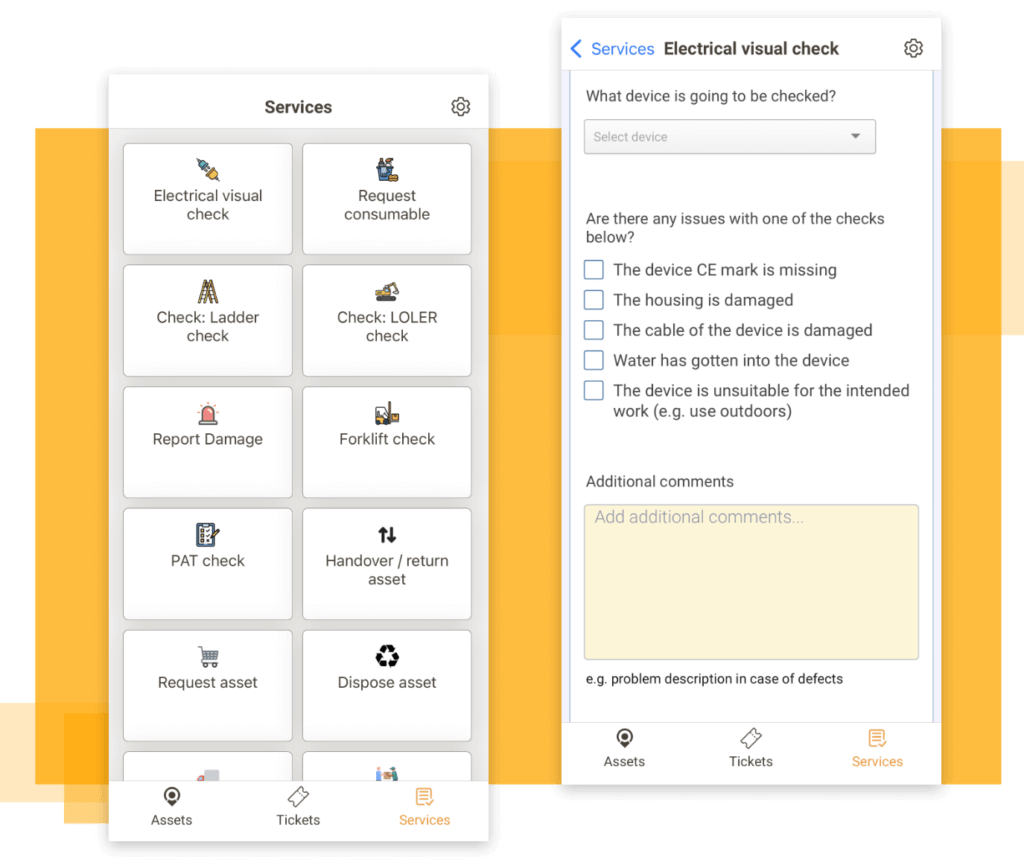Portable appliance testing (PAT) is key to safety. There has recently been an upsurge in the series of incidents involving electrical equipment, both at home and at work. This suggests that safety practices have worsened, which is another reason why PAT testing is necessary. What, precisely, is portable appliance testing? What function do they play in your company? And how frequently should electrical appliances be tested? In this article, you will learn everything you need to know.

Key Takeaways
- PAT testing is the process of checking electrical appliances for safety through a series of visual inspections and electronic tests.
- According to the Health and Safety Executive (HSE), PAT testing should consist of user checks, formal visual inspection and manual inspection using a portable appliance tester.
- Portable appliance test doesn’t just consist of plugging a piece of equipment into a PAT tester, but also encompasses the recording and upkeep of records.
What Is Portable Appliance Testing?
The term portable appliance testing refers to the inspection of electrical equipment to determine its appropriateness for use. While many electrical safety hazards are noticeable physically, diagnostic testing of the item’s functional capabilities is vital to ensure its safety. Furthermore, testing to ensure compliance with the Electricity at Work Regulations (EWR) is essential.
ToolSense is trusted by 700+ companies



What Does Portable Appliance Testing Involve?
According to the Health and Safety Executive (HSE), PAT testing should consist of three steps:
User Checks
Everyone using electrical equipment should get some basic instruction on how to operate them. As well as, what danger indicators to be wary of. Users should feel comfortable visually inspecting the items regularly for visible indicators of deterioration, as well as possible dangers such as wires caught beneath desks or water hazards.
Formal Visual Inspection
A formal visual inspection is often required only when equipment fails or is utilized in high-risk environments such as labs, workshops, or theatres. There may be special local legislation governing when electrical equipment needs formal visual examination by an approved PAT tester. If the inspections are necessary, the person in charge of the area will arrange for them.
A formal visual inspection entails disconnecting the equipment from the power supply, removing the plug cover or equipment casing cover. This happens to ensure that the internal parts of the plug and cable are well-connected, secure and also have the correct fuse with the proper rating fitted. There shouldn’t be any sign of internal damage, overheating, or entry of liquid, dust, or dirt.
Manual Inspection Using a Portable Appliance Tester
Manual inspection ought to be done by a qualified individual who has received the necessary training and equipment. For the safest results, it is highly advised to use an experienced and licensed PAT tester.
The appliance will be inspected for ground continuity and lead polarity, insulation resistance, and the success of the PAT test. The electronic will be marked with a pass or fail label and the results logged for future reference.
Failed appliances should be taken out as soon as possible to be fixed or replaced. If the item is repaired, it must undergo another PAT test before being re-used.
What Is Portable Electrical Equipment?
This phrase refers to items that are mobile, electrically connected, and detachable. They often include a cable line and a plug. Portable electrical equipment includes hairdryers, laptops, cookers, refrigerators, and cleaning equipment among others.
Portable electrical equipment is classified as Class I or Class II based on the protection they provide to the user. Both need PAT tests to assure continued safety, although they are tested differently.
What Appliances Need Portable Appliance Testing?
Portable Appliance Testing is critical for most appliances that may store or discharge electricity. It’s crucial to understand how equipment is classified to know where testing is necessary.
Earthed and Double-Insulated electrical equipment are the two primary classes.
Class I Electrical Item
For safety, this sort of equipment has just rudimentary insulation and relies on an earth connection. If the earth connection is missing, a breakdown in the device might result in an electrical shock. Kettles, toasters, irons, and electric warmers are examples of class I equipment.
Class I equipment poses the most danger, thus necessitating more regular testing.
Class II Electrical Item
Because it does not depend on the earth for protection, class II equipment is safer than class I. These appliances have two layers of insulation, making them significantly safer. Hairdryers, TVs, lighting, and power tools are examples of class II equipment.
Class 2 has a lower danger. However, this does not negate the requirement for testing.
Class III Electrical Item
Extra low voltage equipment, such as battery-operated appliances, is classified as Class III. Cell phones and digital cameras are examples of this. In most cases, these appliances do not need testing.
See How ISS Improved Their Asset and Maintenance Processes With ToolSense
Why Is Portable Appliance Testing Important?
By incorporating PAT into your electrical appliance risk controls, your property will be legally compliant and safe for workers and anybody else who may be exposed. Electric shocks, burns, and flames are the three most serious dangers associated with defective equipment:
Electricity Shocks
When we make a circuit from an electrical source to the ground or earth, we get an electric shock. The sudden passage of electric current through our bodies may cause muscle injury, nerve damage, and temporary paralysis. Because the heart runs on electricity, cardiac arrest is also a possibility.
Burns
The arc flash between the conductor and the live contact may cause burns. An arc flash may reach tremendous temperatures and burn skin tissue practically instantly when it comes into contact with it. Internal tissues might burn due to the higher voltages and longer contact times, resulting in lasting organ damage.
Fires
One of the biggest causes of fires in the UK is faulty plugs and appliances. This happens when an out-of-date device, for example, a frayed cable, conducts heat to a flammable surface like a drape, carpeting, or flooring.
What Will I Receive After a PAT Test?
After the portable appliance inspection and testing is complete, you should get a report that includes the following information:
- An inventory including the kind, name, location, and description of each appliance.
- A complete set of test findings for each appliance that was evaluated.
- A complete list of all failed things, along with an explanation of why they failed.
- Each appliance must have a conspicuous pass or fail sticker that includes the inspection date, the next test date, and the inspector’s signature.
If you are not technically savvy, the contractor or competent person who conducted the inspection and testing should be pleased to walk you through the report and advise you on any further actions that may be necessary.
ISS Austria
„We wanted to have a solution that does not only track expensive assets but also cheap ones. In Austria, ISS operates over 6,500 cleaning machines alone, without even counting vacuum cleaners and other pieces of equipment. With ToolSense we bring them together on a single platform, leveraging data from IoT hardware and improving maintenance and inspection processes.“

Does New Equipment Need PAT Testing?
If your equipment was purchased brand-new and not used, it should be labelled new to service, indicating that it is ready for testing at the next inspection. It’s critical to remember that new things are still prone to non-compliance and improper wiring, and might be electrically dangerous due to low quality. It is advisable to test and tag new equipment to ensure the company’s safety.
How Frequently Should You Test Your Electrical Appliances?
There are no guidelines for how often you should have your equipment PAT tested. The level of risk and frequency of inspections are entirely up to the person in charge of electrical equipment. This is often impacted by the equipment type, its frequency of usage, and the classification of the work environment.
Are Records of Testing Required?
While maintaining records of electrical testing is not required by law, it is strongly recommended showing your insurers, regulators, and customers that you’re compliant. This helps safeguard your business.
Can I Carry Out My Own Portable Appliance Test?
It is not advisable to perform your own PAT test unless you have a thorough grasp of how electrical equipment works and the necessary skills to operate and use portable appliance testers. This might endanger you, your company, and other users. Always seek the services of a properly certified and experienced specialist.
Who Can Carry Out a Portable Appliance Test?
A competent individual with a sufficient degree of expertise should conduct a formal visual inspection. In low-risk contexts, this role might be assigned to an employee if the appropriate training is provided.
However, in high-risk areas or when equipment necessitates inspection and manual testing, it is recommended to consult an experienced and trained specialist with industry knowledge. They must be properly trained and equipped for the job.
Benefits of Using ToolSense for PAT Checks and Other Equipment Safety Inspections
Staying ahead of requirements and quality control for safety inspections without proper tools takes a lot of time and effort. Our equipment inspection software supports you with flexible rules, pre-configured and user-defined inspections, and powerful automations to keep your equipment running smoothly. Some of the biggest benefits are:
- Pre-configured safety inspections
- Eliminate paperwork
- Be compliant with dates and audits
- Address issues immediately
- Never miss an inspection with our reminders
- Easy to use mobile access

Conclusion
When we talk about PAT testing, one thing comes to mind: safety. PAT testing is critical for ensuring that safety standards are followed when using electrical devices. Bear in mind that it is preferable to be safe than sorry, particularly with the current influx of counterfeit electrical appliances on the market.
Finally, before acquiring electrical equipment, ensure that it has undergone portable appliance testing. PAT testing at regular intervals is vital to ensuring that all safety regulations are fulfilled at all times.
FAQ
No, although the law mandates that all electrical equipment in the workplace be maintained to ensure its safety and avoid posing a hazard, it does not specify how, when, or who should do the maintenance. Experts recommend using a PAT test to ensure you meet these legal obligations while also safeguarding your employees.
Portable appliance testing (PAT) applies to the inspection of electrical equipment to determine if it is fit for use. Testing the functionality of the item is essential to ensure its safety and compliance with the electricity at work regulations (EWR).
A PAT certificate is issued to a company after the testing of portable equipment. It may be used to demonstrate compliance to authorities, insurance companies, consumers, and employees.
Portable appliance testing involves user checks, formal visual inspection and manual inspection using a portable appliance tester.
The cost varies according to the kind of equipment and the number of items being tested. However, PAT testing is an inexpensive approach to comply with your health and safety duties.
Yes, you and your employees are jointly liable for the maintenance of any work-related electrical equipment they use, such as computers, desk lights, fans, and photocopiers.

